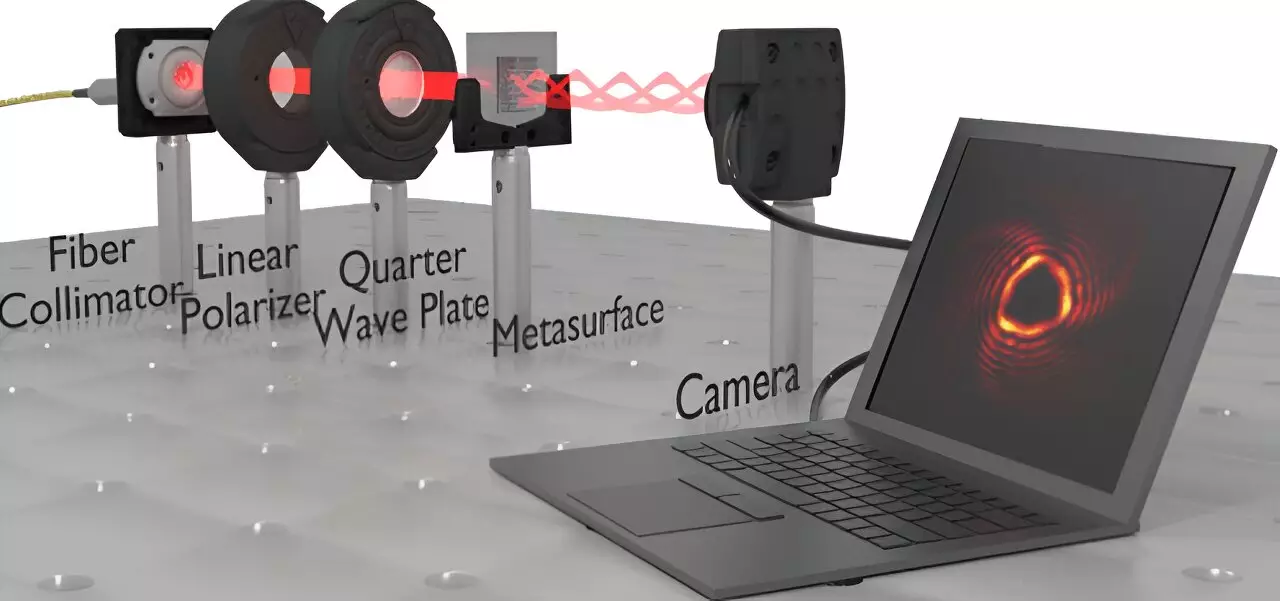At the forefront of modern optical technology, researchers at the ARC Center of Excellence for Transformative Meta-Optical Systems (TMOS) have achieved a groundbreaking advancement with the development of metasurface-enabled tractor beams. These beams, capable of pulling particles towards their source, are reminiscent of the thrilling gadgets depicted in science fiction movies, yet now, they stand on the brink of actualization. The pivotal research led by a team from the University of Melbourne reveals innovative approaches to utilizing a silicon metasurface to generate a solenoid beam, foreshadowing a future where the once-fantastical concept can become a practical tool.
The Technical Breakthrough
Traditionally, solenoid beams required cumbersome special light modulators (SLMs) that limited their application to laboratory settings due to their size and complexity. However, the novel approach outlined by the TMOS researchers introduces a thin layer of nanopatterned silicon, measuring an astonishing 1/2000 of a millimeter in thickness. This radical reduction in scale not only increases portability but also paves the way for potential incorporation into handheld devices. The ramifications of such a technology could be vast, particularly in the medical field, where minimally invasive procedures are increasingly desirable. Imagine a future where biopsies can be performed without the need for forceps, thereby reducing trauma and promoting faster healing.
The Science of Solenoid Beams
At the core of this innovative research lies the manipulation of light itself. While most laser beams exert a pushing force, pushing particles away from their source, solenoid beams operate on an entirely different mechanism. They function by pulling objects towards the light source, akin to the way a drill extracts shavings while boring into wood. This powerful capability places solenoid beams in a unique category of optical manipulation, with high potential for application in various fields, ranging from environmental science to biomedical engineering.
The process behind creating the solenoid beam is nothing short of remarkable. By crafting a phase hologram corresponding to the desired beam profile, the researchers etched intricate patterns into silicon using advanced techniques such as electron beam lithography and reactive ion etching. The results are impressive: roughly 76% of an input Gaussian beam is successfully transformed into a solenoid beam, effectively segregating it from the unconverted light. This sharp distinction allows for unobstructed manipulation and further experimentation.
Wider Implications and Future Prospects
Lead researcher Maryam Setareh emphasizes the high efficiency and compact nature of this innovative device, which indeed holds the promise for a range of revolutionary applications. From enhancing optical communications to reshaping how we interact with micro-particles, the potential is vast. As researchers continue to refine and develop this technology, it is clear that metasurface-enabled tractor beams may soon transition from the realm of science fiction into everyday reality.
The implications stretch beyond mere novelty; successful implementation of this technology could be life-changing. Imagine unobtrusive medical instruments that leverage light manipulation to diagnose conditions without invasive measures. This exciting research not only highlights the ingenuity of modern science but also beckons an era where principles once relegated to imaginative storytelling might become vital components of our technological landscape. The collaborative effort and vision shown by TMOS illustrate a compelling intersection of art and science, a testament to humanity’s relentless pursuit of innovation.


Leave a Reply